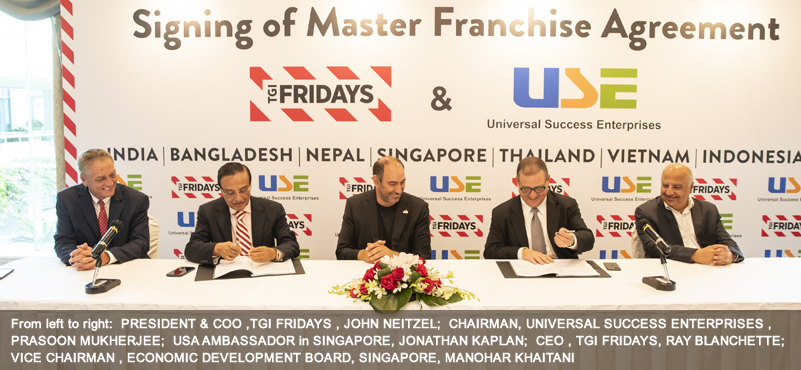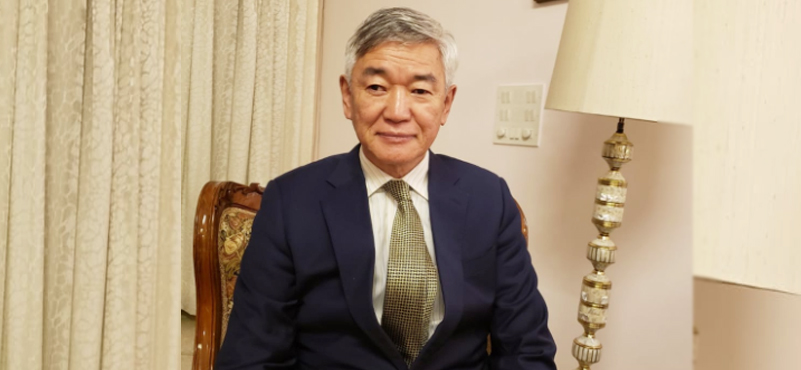It’s a dream city for any tourist in the world. Over one-third of its population on any given day consists of visitors on either business or holiday. We meet with Joe D’Alessandro, President & CEO, San Francisco Travel Association. In a free-wheeling conversation, Alessandro explains the key strategies which make San Francisco one of the most coveted destinations in the world…
What brings you to India this time? Any specific mission, or just catching up?
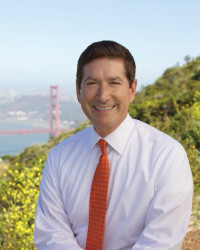
India is one of our top 10 markets and the percentage of growth that we are seeing from India is outpacing most of our established markets. So we will continue to see India go higher and higher in our market mix. We are very proud that we were the first US city to have a rep office here in India in 2007 and we have seen growth ever since then.
What has been the growth like since 2007?
In the last 5 years we have seen about a 27% growth and we anticipate the growth to continue the way it has been over the next few years. What is really different, the dynamics are shifting, I think a lot of the airlines are really seeing the potential from India. So over the last six months we have seen a huge increase of air service into SFO such as Turkish Airlines times perfectly well to connect to the flights to Delhi and Mumbai, Etihad started service in December last year using a Jet Airways airlines, obviously targeting the Indian market with their connectivity throughout India. And if you go through Abu Dhabi, you pass US customs in there and by the time you reach SFO, you are done. Cathay Pacific has increased their service from Hong Kong to SFO which also helps and Emirates has started A380 service from Dubai into San Francisco and all this is just in the last few months. So we really do believe that this market will continue to be a really strong market.
When you say that you had a 27% cumulative growth, what has been like for other states or major tourist centres in US?
SFO International airport is the fastest growing airport in the United States in terms of international travel. We are outpacing the rest of the country. When it comes to overnight hotels stays, 40% of our visitors that stay in hotels are international visitors and again that is a bigger market share than other cities in the United States. The growth internationally into SFO has been very strong. When you look at the top three markets for the growth, percentage-wise its China, India and Brazil. Those three have grown at a faster pace than others and has seen consistent growth. China has been the fastest, it went from the 15th largest market some 10 years ago, to number 2 now. All three of them have seen similar percentage growths into SFO in the last few years, all for different reasons. One reason that makes India so different and unique is that of all the markets that people come into SFO for meetings and conventions, India is number 6 in that market. And this is an important segment, also the high tech connection between India and the Bay area is driving a lot of that business and then there is visiting friends and family with the presence of the largest Indian community in the United States living in the Bay Area. Every indicator that we see for long term growth from India into SFO is performing well.
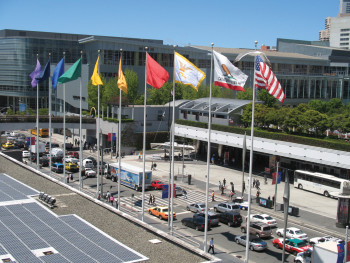 When I think of India and the US as the larger two markets, considering the size of the two countries and the interaction between the two considering the large Indian population in the US, these countries must be severely handicapped by direct connectivity. All the airline connections that you are talking about are either Emirates, Etihad etc. but between Indian and US carriers I don’t see any growth happening which is surprising.
When I think of India and the US as the larger two markets, considering the size of the two countries and the interaction between the two considering the large Indian population in the US, these countries must be severely handicapped by direct connectivity. All the airline connections that you are talking about are either Emirates, Etihad etc. but between Indian and US carriers I don’t see any growth happening which is surprising.
So I think it is a matter of time. The whole aviation history has changed so dramatically especially with the long haul carriers. To be honest the distance between India and SFO is quite far and when I was here two years ago we were not talking about Etihad or Emirate, but instead we were talking about United and Cathay. But the dynamics in just a very short time has shifted significantly and now we are talking about all this new service. The airlines today are able to adapt themselves so quickly, so as soon as they all have the ability to make that long trip and do it successfully, it will happen.
In a larger macro picture are American carriers looking at India?
Yes, they are looking at anywhere where they have opportunities for growth. As far as American carriers go that services SFO the most is United. It is almost 50% of all the traffic into SFO. We are seeing that the United are using the Dreamliner now to establish service to longer haul markets.
You were talking about MICE in SFO, and you said India is number 6, what is the typical profile of an Indian company which is looking at MICE in SFO?
It is from two areas: high tech meetings and medical meetings. SFO convention centre is the most utilized convention centre per square foot in the US. Every major medical and tech company or group holds conventions and meetings here. Also for instance, American medical associations can have a large percentage of international delegates and in these big numbers are coming from India.
How much is tourism central to SFO, to its economy for example?
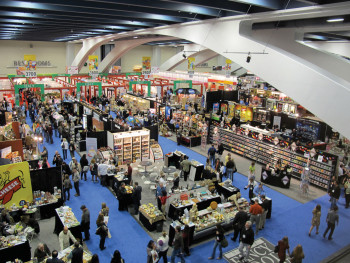 SFO’s economy is the strongest in the United States right now. There is a lot of talk about what drives that. w Keep in mind that SFO geographically is a very small city, we only have 850,000 residents in the city of SFO but to have tourism be the number one driver of the economy is very significant.
SFO’s economy is the strongest in the United States right now. There is a lot of talk about what drives that. w Keep in mind that SFO geographically is a very small city, we only have 850,000 residents in the city of SFO but to have tourism be the number one driver of the economy is very significant.
And against the 850,000 locals, what is the kind of numbers that you get?
18 million visitors and tourists come into SFO but the population of SFO on a daily basis increases by about 300,000 people a day – these are people who come in to work or people who come in to visit. More than a third of SFO population comes in on a daily basis.
Many countries are concerned about the onslaught from tourism. Will it hamper my local customs? Will it erode into my values, is tourism good for my social fabric? Do these tourists impact on your local culture in any way?
We are strong proponents of sustainable tourism and tourism would never work in SFO if we were creating a false or manufactured tourism product. We are not a destination that has theme parks or creates any area for tourists to go to. Most of our visitors use public transportation or walk and our very tourism product is that when tourists come to SFO they do what the locals do. Say Las Vegas, for example, where the tourists live on the strip but the locals live somewhere else. In SFO the locals and the tourists are doing the very same things. So the locals appreciate the fact that when they go to a restaurant, tourists are helping that restaurant to stay open. The very lifestyle of SFO is supported by tourists, because tourists do they same things as they do.
How much of the activity locally in the city has factored in that you will have a visiting third of the population on a daily basis?
Absolutely, there is no question about it. That is part of what makes San Francisco tick. The visitors like to blend in with the tourists which even the locals like. They like the fact that the person at the table next to them could be from Delhi. It makes for an interesting conversation. We look at ourselves as a world city, we are certainly one of the most international cities in the world. And tourism really makes that tick.
One expression that you have used a couple of times – tourism product, what is the tourism product of SFO?
It is our lifestyle. We are famous for the Golden Gate Bridge, it is the number one icon of the Bay area and of America and the locals use it every day. It’s a mode of transportation. People love the cable car, it is again a mode of transportation here and not something created only for tourists. It is our way of life.
Most often when you are talking of a tourism product, it will be something to see and here you are saying it is your lifestyle. What other components of your lifestyle would that be?
If I were to tell you the most popular things for San Franciscans to do, is to go walk through the Ferry Building in the Farmer’s Market and it is also one of the most popular things for tourists to do. We do not create a tourism product that the locals do not want to participate in. It’s not as if we are thinking we are going to build this awesome tourism destination here. We are building for us and we are going to share it with tourists. We do things uniquely. We build in a way that we like going there and so tourists like going there as well. I don’t know of many cities in the United States that looks at whatever it does as a way that benefits the local population and is also a tourist attraction. I cannot even think of a single major development in SFO that was not built taking into consideration also the visitor. For instance our City Hall, is built with the visitor in mind. It is the only City Hall I know in the United States that does parties and special events in the centre of government. It is also built for visitors to come and enjoy.
Out of the total Indians going to the US, what percentage are also going to SFO?
We do know that 40% of all visitors to California, do come to SFO.
What is the level of awareness of the product that you find in India?
By and large the sophisticated international Indian traveller is familiar with SFO. Sometimes they maybe only familiar with big images, or tech companies. Our goal is to educate that likely Indian traveller to the US about what there is to do in SFO. The more the people understand a destination, the more likely they are to stay more.
What is a typical length of stay?
From the Indian visitor it is about 5.4 nights and that is the longest from any international markets for hotel stays which is very significant because it creates the greatest economic impact. Hotel occupancy in SFO is amongst the highest in the world – it was 85% year round, last year. We don’t look for number of visitors, instead we look more at the economic impact and value of the visitor. 95% of all visitors that come to SFO say that they want to return. We want them to have a positive experience. We believe that the Indian market does provide quality visitors that is very attractive for SFO.
Do you think that the Indian traveller is discerning enough in understanding the nuances of a lifestyle like yours?
So the number one thing that San Franciscans like to do is to eat. And the number one things that the Indian visitors like to do is the culinary experience. That’s a pretty good connection. Our food scene is probably the most dynamic on the US right now. What is equally great is that we have great Indian food here, and also Chinese and Italian.
What is the mix of the local population?
The largest is Asian, about 40% of all the residents of SFO are Asian and they all have brought their culinary traditions with them. Our Mayor is Chinese American. Then you have a large Latino and Italian population. It’s really a very diverse population. We have always had a huge international influence in SFO that is today also influencing the lifestyle.
The typical idea one had was an expression saying ‘done this and done that’. Is that profile changing?
I think that everyone around the world travels somewhat differently. We see different markets that travel in large groups or independently. Typically if it is your first visit, you are more comfortable in a large group. If you are back again then you want to experience more independent travel. Our current marketing slogan is ‘never the same, always San Francisco’ and I think that the reason we went with this is exactly what you said. People come for the first time, they want to go see the Golden Gate Bridge and ride in a cable car but we want to make sure that they are experiencing something else – that the city is constantly changing. For instance, the neighbourhood or the restaurant experience is always different. No matter how many times you come, if you dig just a little deeper there is a whole wealth of experiences that you can find.
What is the average size of a conference that you get?
Conferences go from 100,000 delegates to 100 delegates. We want the experience to be positive. We have large, mid-size and smaller ones. Last year we held two large conferences with 100,000 delegates. These are annual events spread over 4.5 days. And that is as big as we want conferences to be in SFO.
How is Cinema Tourism for you?
It is very big because there have been so many movies based in SFO or partially shot in SFO, such as Mrs. Doubtfire. Even in the last three years, we have had so many films shot in the city. So many people see their first images of SFO on the television or movie screen. And they get that in their mind to visit. From India too the response has been very positive. We had My Name is Khan, which was an Indian born film and this is the next generation we would like to see.
Many US states are vying with each other in terms of giving incentives. Do you have any incentive policy in place?
Yes, we have a California Film Commission and a San Francisco Film Commission that works with production companies, and filmmakers to help streamline the process of making films in California. California is really the birthplace of the film industry with Hollywood being there and so it in our backdoor.
The only thing that I would like to add is that for India we are not coming here today and will forget about it tomorrow. We are in this market for the long term and we see so much potential. And this market will continue to be very important to us.


